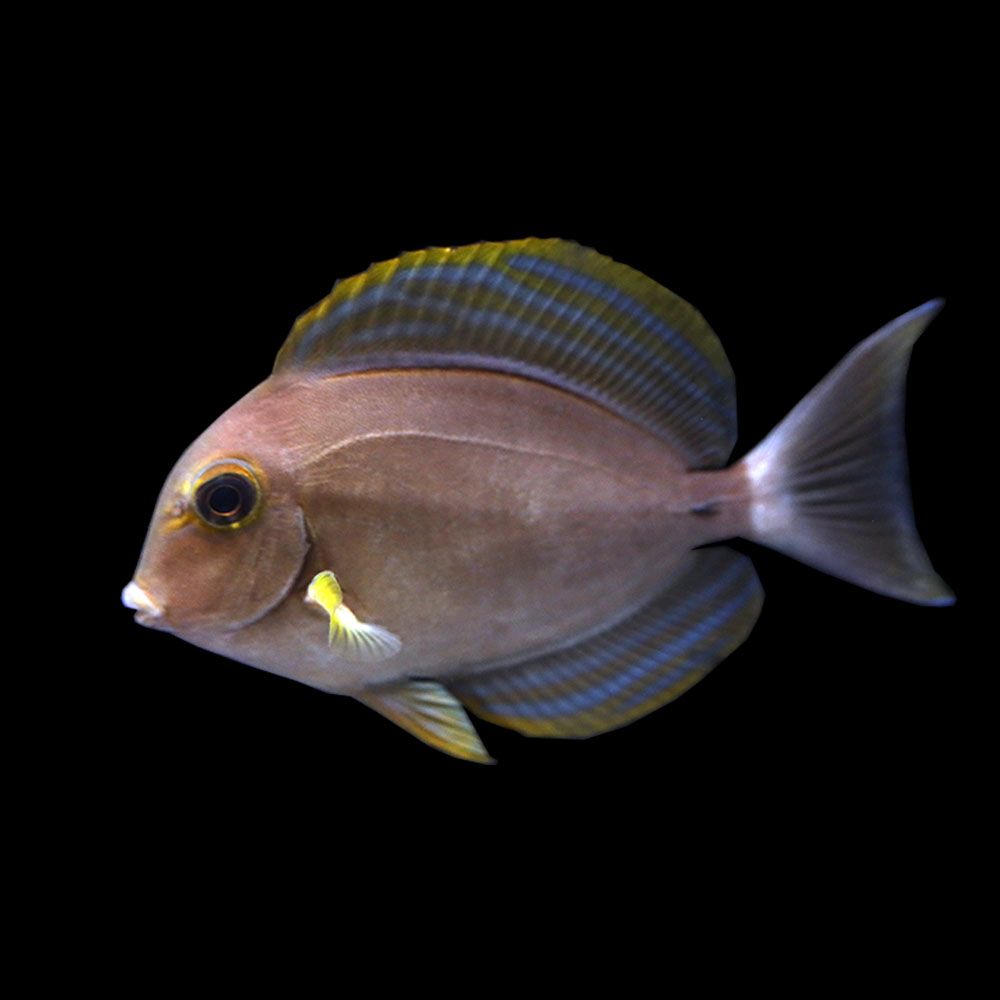ONLINE STORE MINI
Scroll down for a sneak peek at our online store. For full functionality and experience, click the button below to browse the full online store!!
Ringtail Tang (Acanthurus blochii)
Ringtail Tang (Acanthurus blochii)
Description:
Behavior: The Ringtail Tang, also known as the Blochii Tang or Ringtail Surgeonfish, is a robust and active species known for its striking coloration and energetic swimming behavior. These fish can be semi-aggressive, particularly towards other tangs, and are best kept in well-structured environments with plenty of live rock, caves, and open swimming areas. Ringtail Tangs are known for their constant grazing on algae and active swimming patterns.
Color: The Ringtail Tang is visually stunning, featuring a body that is predominantly dark brown to gray with a distinctive white ring around the base of the tail. The dorsal, anal, and caudal fins are highlighted with bright yellow, adding to their overall striking appearance. Juveniles and adults exhibit similar color patterns, although the intensity of the colors may increase as they mature.
Diet: Ringtail Tangs are primarily herbivores and thrive on a diet rich in marine algae. They will graze on algae growing in the tank and should be provided with a variety of seaweed and algae-based foods. Supplementing their diet with high-quality flake food, pellets, and occasional vegetable treats like blanched spinach or zucchini can help maintain their health and vibrant coloration.
Tankmates: Ringtail Tangs are generally semi-aggressive and can be housed with a variety of other robust marine species. Suitable tankmates include other tangs, angelfish, wrasses, and larger peaceful fish. This fish can be kept with other tangs of the same genus. It is advisable to introduce them all at the same time to an appropriately sized aquarium, usually 5 feet or longer. Ensure that algae and other food are not lacking to minimize aggression problems.
Reef Aquarium Compatibility: Ringtail Tangs are reef-safe and do not harm corals or invertebrates. Their herbivorous diet helps control algae growth, making them a beneficial addition to reef aquariums.
Max Size: Ringtail Tangs can grow up to 14 inches (35 cm) in length. Due to their large size and active nature, they require a spacious aquarium of at least 180 gallons to thrive and maintain good water quality.
Origin: Ringtail Tangs are commonly found in the Indo-Pacific region, particularly around the waters of the Great Barrier Reef, Indonesia, and the Philippines.
Sexual Dimorphism: Ringtail Tangs do not exhibit significant sexual dimorphism, making it difficult to distinguish males from females based solely on appearance.
Interesting Facts:
- Ringtail Tangs are known for their distinctive white ring around the tail and bright yellow fins, making them a favorite among marine aquarists.
- They are relatively hardy and can adapt well to captivity with proper care and a well-maintained environment.
- Ringtail Tangs are active swimmers and enjoy exploring their surroundings, adding dynamic movement to the aquarium.
- Their diet of algae and seaweed helps keep reef aquariums clean and free of excessive algae growth.
Disclaimer: Aquarium Arts cannot guarantee compatibility with your current fish or the fish you buy and cannot be held liable for fish lost due to aggression.


